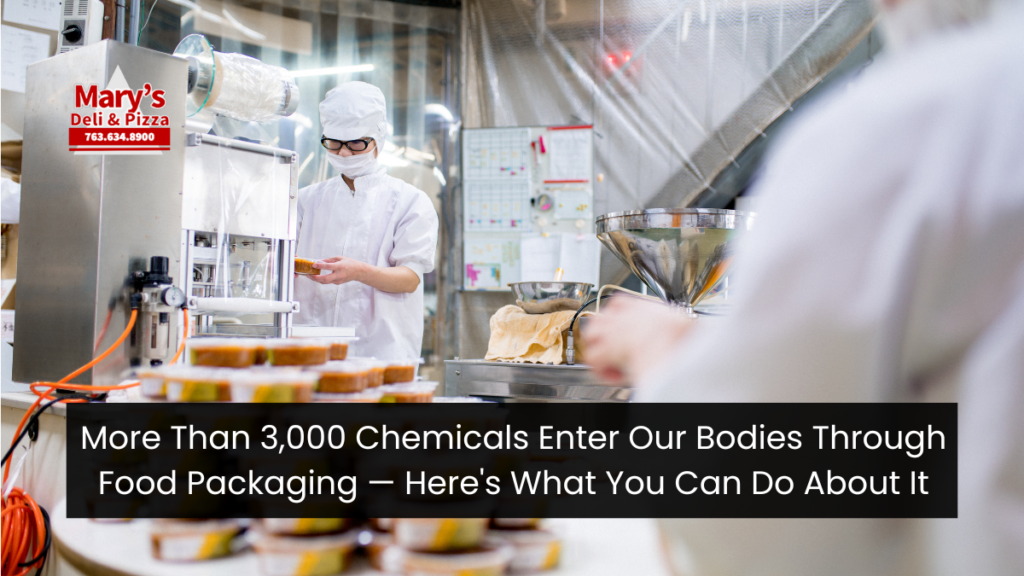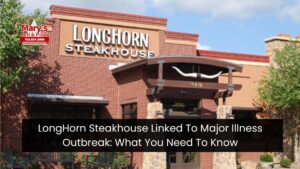Did you know that more than 3,600 chemicals from food packaging could be entering your body every day? A recent study uncovered some alarming facts about food contact chemicals (FCCs), commonly found in packaging materials like plastics, cans, and containers, and how they can pose serious health risks.
The Shocking Reality Of Food Contact Chemicals (FCCs)
According to a recent study titled “Evidence for Widespread Human Exposure to Food Contact Chemicals,” conducted by researchers across multiple countries, more than 3,600 known food contact chemicals have been detected in the human body. This accounts for 25% of the 14,000 chemicals known to be used in food contact materials (FCMs) like packaging, storage containers, and kitchen utensils.
FCCs are chemical compounds that come in direct contact with food. Some of these chemicals, such as metals and per- and polyfluoroalkyl substances (PFAS)—also known as forever chemicals—have been proven to leach into food, especially at high temperatures. The troubling part is that around 80 of these chemicals have properties of high concern related to human health.
What Are Food Contact Chemicals (FCCs)?
Food contact chemicals (FCCs) are substances present in the packaging and containers that come in contact with food. This can include materials like plastics, metals, paper, and glass. These chemicals are present not only in the packaging but also in items such as food processing equipment and kitchenware.
The challenge is that not all FCCs are intentionally added; some can be byproducts of the manufacturing process or contaminants from recycled materials. Metals and PFAS, in particular, are some of the most commonly detected chemicals in the human body as a result of exposure to these materials.
How Harmful Are These Chemicals?
The real concern lies in the long-term exposure to these chemicals, which can have several adverse effects on your health. According to experts, exposure to PFAS—used in packaging for its oil, water, and stain-repellent properties—can lead to severe health risks such as:
- Changes in cholesterol levels
- Impairment of liver functions
- Reduced infant birth weight
- Suppressed immune system responses
- Increased risk of infections and cancers
Dr. Jamie DeWitt, an expert in environmental health, explained that the immune system suppression caused by PFAS is particularly concerning. Although it may not lead to immediate illness, long-term exposure can make individuals more susceptible to infections and diseases.
How To Reduce Your Risk Of FCC Exposure
Reducing exposure to harmful food contact chemicals can be tricky, but it’s not impossible. Here are some steps you can take to lower your risk:
- Avoid Heating Food in Plastic Containers: One of the most common ways FCCs leach into food is when plastic containers are heated, especially in the microwave. Transfer food to glass or ceramic dishes to heat it.
- Be Mindful of Recycled Paper and Cardboard: While recycling is generally a good practice, recycled paper and cardboard packaging can introduce non-food-grade inks and other contaminants. This type of packaging is prone to adding more chemicals to food than other materials.
- Choose PFAS-Free Products: Look for food packaging and storage containers labeled BPI-certified, meaning they are compostable and PFAS-free. The Biodegradable Products Institute (BPI) ensures that packaging materials meet certain safety standards.
- Use Glass or Stainless Steel Containers: Switching to glass or stainless steel containers for food storage is another great way to avoid unnecessary chemical exposure.
- Stay Informed: Regularly check resources like the Center for Environmental Health for updated lists of PFAS-free products and packaging. Being aware of what materials are safer can help you make better choices for your household.
What’s The FDA Doing About It?
In response to growing concerns, the Food and Drug Administration (FDA) has scheduled a public hearing on the “Development of an Enhanced Systematic Process for FDA’s Post-Market Assessment of Chemicals in Food.” This hearing will take place on September 25, 2024, and provides an opportunity for consumers to submit questions and voice their concerns regarding the chemicals present in food packaging.
The FDA’s initiative aims to develop a more systematic approach to evaluating chemicals in food packaging to ensure that they are safe for consumers in the long run.
Conclusion:
Food packaging may seem harmless, but the presence of more than 3,600 chemicals in our bodies linked to food contact materials is concerning. The long-term exposure to chemicals like PFAS can have significant health implications, including immune system suppression and increased cancer risks.
However, by making small changes—like avoiding plastic containers, using glass or stainless steel, and staying informed about safer packaging options—you can significantly reduce your risk. Stay proactive by participating in regulatory discussions, such as the FDA’s upcoming hearing, and continue to prioritize your health by making informed choices about the products you use every day.
FAQs
1. What Are The Most Dangerous Chemicals Found In Food Packaging?
Some of the most concerning chemicals include PFAS, metals, and other substances that can leach into food at high temperatures or when exposed to certain conditions. These chemicals are linked to health issues like immune system suppression, increased cancer risk, and liver damage.
2. How Can I Avoid Food Contact Chemic
Use glass or stainless steel containers, avoid microwaving food in plastic, and look for BPI-certified packaging, which is PFAS-free. Also, be cautious when using recycled paper and cardboard as food packaging, as these can introduce non-food-grade contaminants.
3. What Is The Fda Doing To Address Food Packaging Safety?
The FDA is conducting a public hearing to develop a better post-market assessment of chemicals in food. This hearing will take place in September 2024, allowing consumers to participate in the conversation about the future of food safety.
4. Are There Safe Alternatives To Plastic Packaging?
Yes, materials like glass, stainless steel, and ceramic are safe alternatives to plastic. Additionally, look for PFAS-free certified products.
5. How Do Chemicals From Food Packaging End Up In The Human Body?
Chemicals from packaging can migrate into food, especially when heated or when in contact for long periods. These chemicals can enter the body through the food we consume, leading to long-term exposure risks.






